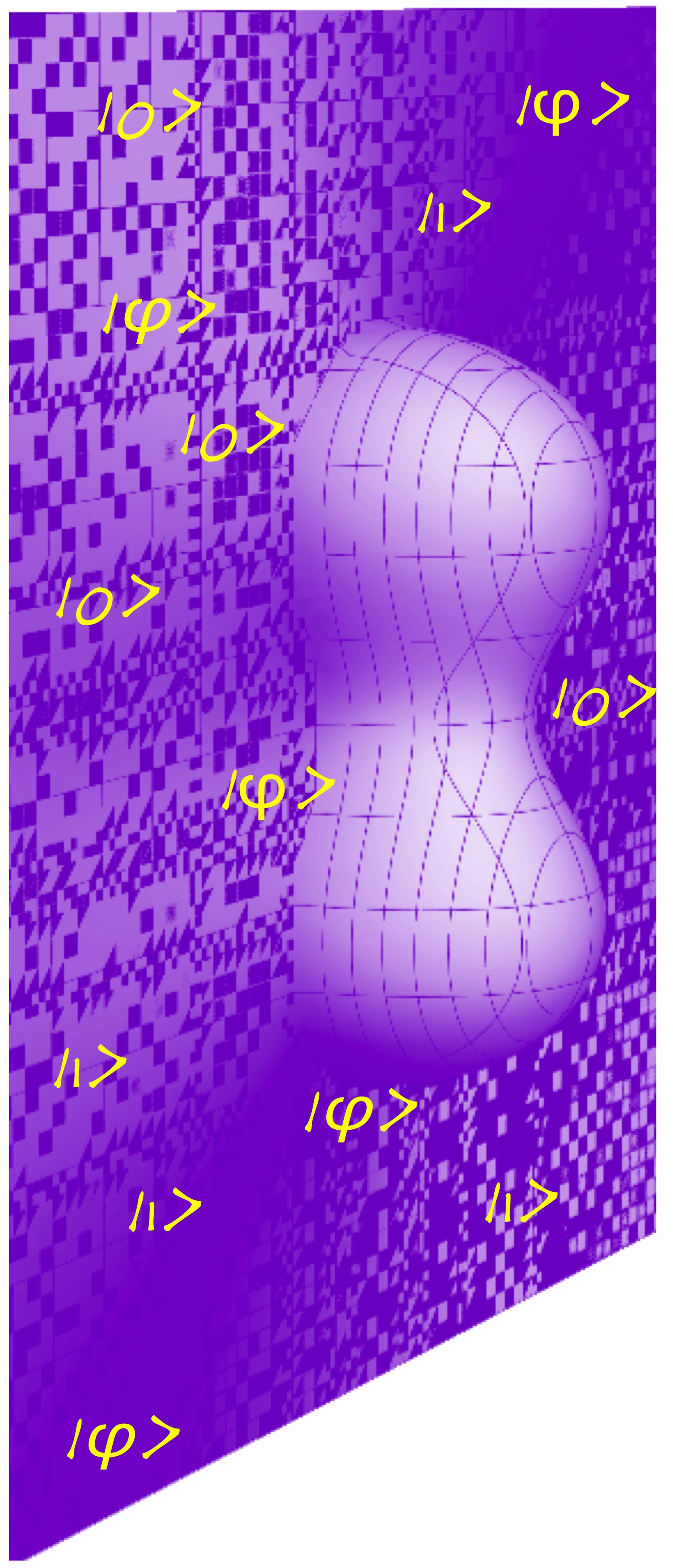LSU Research Professors Awarded $800K from U.S. Department of Energy
Interdisciplinary project merges nuclear theory with quantum theoretical and experimental physics.

Quantum computers have the potential for computational breakthroughs in classically unsolvable nuclear physics problems. By exploring entanglement and symmetries in nuclei, LSU researchers seek to develop novel quantum algorithms that aim to ultimately model nuclei that are inaccessible to the best of modern-day supercomputers due the explosive growth in computational resources with the number of particles.
Out of 13 awarded projects from the U.S. Department of Energy, or DOE, LSU’s “Quantum simulations of emergent collectivity and clustering in nuclei from first principles,” involves collaborative research from Associate Professor Kristina Launey, Assistant Professor Alexis Mercenne, Assistant Professor Omar Magaña-Loaiza, and Professor and Hearne Chair of Theoretical Physics James Sauls. The selected projects are at the forefront of interdisciplinary research in nuclear science, fundamental and applied research, as well as quantum information science and technology.
“This interdisciplinary program presents a special opportunity for early experiments with quantum computing architectures by merging a state-of-the-art many-body approach to nuclear structure and reactions, novel near-term quantum computing algorithms, along with first-of-their-kind multidimensional photonic network,” Sauls said.
The research targets a paradigm shift in our understanding of the challenging collectivity and clustering in atomic nuclei and associated almost-perfect symmetry, which emerge from first principles (or ab initio).
“We anticipate new insights into the efficacy enabled by symmetries and quantum information science, for ultimate impact on heavy nuclear species and exotic nuclei far from stability that are inaccessible to experiment and calculations,” Mercenne said.
With the engineering of the multidimensional photonic network for quantum simulations of complex nuclear dynamics, the goal is to illustrate its efficacy for the challenging cluster systems of beryllium, carbon, and neon isotopes with equal numbers of protons and neutrons, including the elusive Hoyle state formed by the stellar triple-alpha reaction that can considerably affect nucleosynthesis and stellar evolution models.
“Working at the intersection of several disciplines, both theory and experiment, is challenging but very exciting and rewarding,” LSU undergraduate researcher Didrik Larsen said. “I am learning about state-of-the-art simulations of atomic nuclei using high-performance computing, and now I have the unique opportunity to help design these simulations on quantum computers.”
“Our new research program will focus on exciting experimental research that explores the possibility of quantum simulation using our multiphoton platform,” said LSU graduate student Mingyuan Hong, who is working with Magaña-Loaiza. “Our experimental photonic network platform enables the generation and characterization of multidimensional entangled photons with specific orbital angular momentum (OAM) and polarization properties. This will allow us to simulate various effects in physics, including Hamiltonians associated with complex dynamics in nuclear physics.”
“The overarching goal is to push the frontiers of nuclear science by harnessing the benefits of current, near-term, and future quantum computing devices," Launey said. “This project will benefit from interactions with the DOE National Quantum Information Science Research Centers based at Oak Ridge National Laboratory and Fermi National Accelerator Laboratory dedicated to advancements toward the second quantum revolution.”
T. Dytrych, K. D. Launey, J. P. Draayer, et al, "Physics of Nuclei: Key Role of an Emergent Symmetry", Phys. Rev. Lett. 124, 042501, 2020, doi.org/10.1103/PhysRevLett.124.042501
K. D. Launey, A. Mercenne, and T. Dytrych, "Nuclear Dynamics and Reactions in the
Ab Initio Symmetry-Adapted Framework", Ann. Rev. Nucl. Part. Sci. 71, 253, 2021,
doi.org/10.1146/annurev-nucl-102419-033316
The 13 projects awarded by the U.S. Department of Energy cover a wide range of topics, from the use of quantum computing to tackle particularly challenging nuclear physics problems and the development of quantum sensors, to the R&D of next-generation superconducting materials and architectures for high-coherence qubits. The aim is to apply nuclear physics expertise to the development of quantum devices and harness quantum computing platforms and sensing as tools to enable nuclear science discoveries.
###
Contact: Mimi LaValle
LSU Physics & Astronomy
225-439-5633
mlavall@lsu.edu